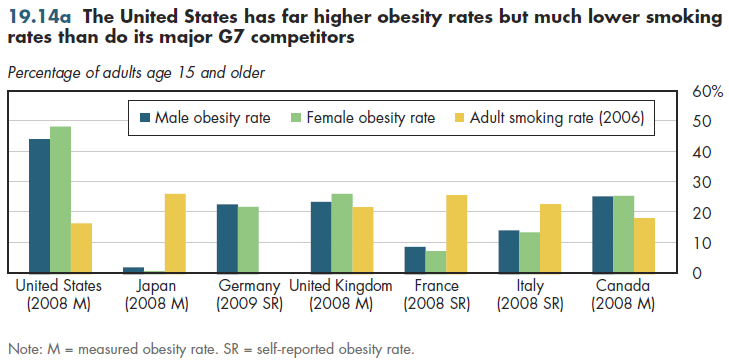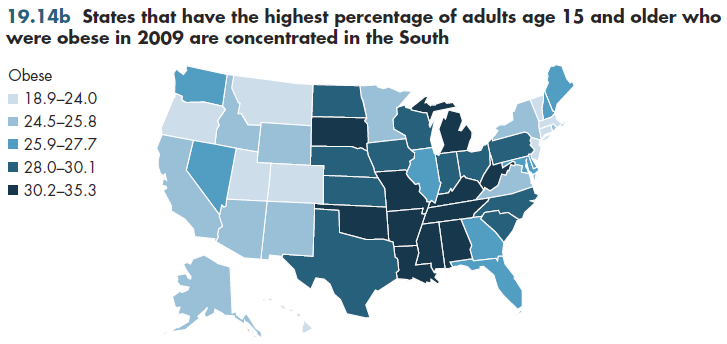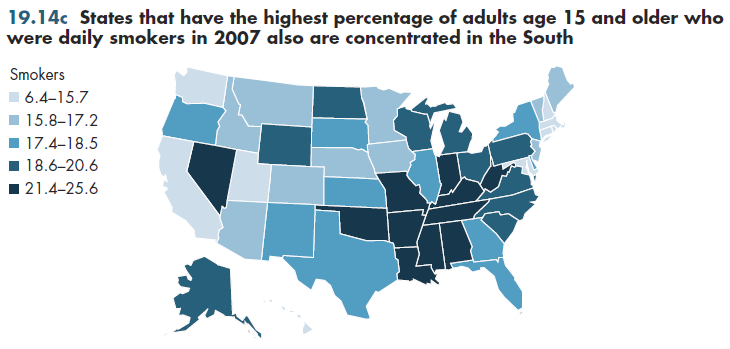The United States by far has the world's highest rate of obesity (figure 19.14a). More than 30 percent of all women in the United States are obese (based on measurements, not self-reports). Within the G7, the two countries ranking just behind the United States (the UK and Canada) have male and female obesity rates that are only approximately 25 percent. Japan's measured obesity rate for men and women is less than 5 percent.

Unfortunately, measured obesity rates for all G7 countries are not available. The difference can be considerable. In Canada, for example, the measured obesity rate is 50 to 60 percent higher than the self-reported rates for men and women. The rates shown for Germany, France, and Italy might therefore be much higher than illustrated.
Smoking is the single largest cause of death in the United States, even though the nation has one of the lowest smoking rates among industrialized countries. There are many ways to measure smoking, but this metric counts the percentage of adults age 15 and older who self-report that they are daily smokers. Using this metric, adult smoking rates in Japan and France are more than 50 percent higher than current rates in the United States. In fact, none of the G7 countries for which this information is available has a lower smoking rate than in the United States.
Smoking and obesity both contribute considerably to premature mortality in the United States. Obesity-related and smoking-attributable medical costs each amount to approximately 6 percent of national health spending.
However, differences in obesity and smoking rates within the United States itself rival cross-national differences in such rates among the G7 countries. States exhibit less than a two-fold difference in obesity rates (figure 19.14b) but a three-fold difference in smoking rates (figure 19.14c). This highlights the diversity of the United States in terms of these particular unhealthy behaviors. It also highlights the limitations of national averages when making cross-national comparisons.


Download PowerPoint versions of all figures.
- Department of Health and Human Services. Centers for Disease Control and Prevention.
- Organisation for Economic Co-operation and Development.












